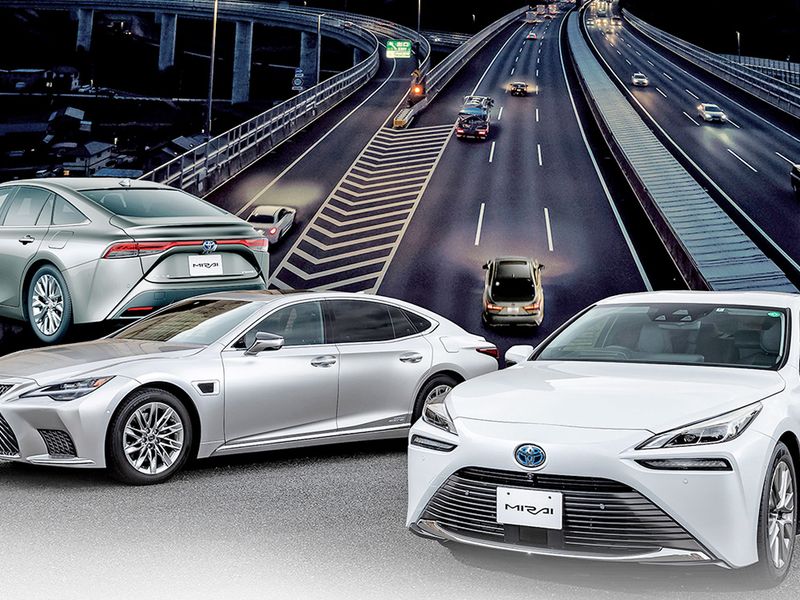
TOKYO — Toyota’s advanced new automated-driving system has finally reached the market in Japan, packed with lidar, full over-the-air update ability and machine learning technologies — all firsts for the automaker.
The Level 2 driving setup, marketed under the name Advanced Drive, went on sale here last week in a special grade of the flagship Lexus LS 500h luxury sedan. It also will be sold in a version of the Toyota Mirai fuel cell sedan staring this week.
The technology, which enables the cars to automatically change lanes and pass vehicles in highway driving, represents a key step in Toyota’s effort to catch rivals in the autonomous-driving race.
But the introductions also underscore Toyota’s cautious, go-slow approach. The system will be available only in Japan for the time being, though it comes to the U.S. in the LS this fall. And it will be limited to the two top-tier offerings of the Lexus and Toyota brands, for now.
The new technology also is expensive, adding some $6,000 to the LS sticker in Japan.
Toyota Chief Digital Officer James Kuffner called the development a key move by Toyota toward programmable cars. He is spearheading the push to create an operating system for digital vehicles of tomorrow.
“This is really an important first step on our journey towards software-first development,” Kuffner said at a briefing last week. “Software-first development means that we design the architecture of the software first, and then select appropriate hardware to realize a great system.”
Combined with artificial intelligence, he said, it delivers “a powerful supercomputer on wheels.”
Advanced Drive also is Toyota’s first application that is fully capable of over-the-air updates for the entire system’s software in support of future add-on technologies.
Future directions are hinted at in the car’s design.
The LS and Mirai get Toyota’s first production-vehicle application of a lidar sensor, which is in the front of the car. But both cars also have blacked-out apertures in the rear and on the sides behind the front wheel wells. Those nooks will accommodate lidar sensors that will come with upgrades down the road to enable more advanced automated driving.
The rollout furthers Toyota’s bid to catch competitors, especially in the luxury segment, that have been more aggressive in introducing self- driving vehicles.
Last month, Honda Motor Co. began selling a version of its Legend sedan in Japan with a Level 3 system. That car allows drivers to take their hands off the wheel and eyes off the road, but only under limited low-speed conditions, such as traffic jams, and on certain roads.
Toyota has steered clear of labeling its system “self-driving” or autonomous, instead calling the technology “automated,” a nod to the system’s reliance on human interaction.
The Advanced Drive package was developed under the Mobility Teammate concept that Toyota has been working on for years. It’s called Toyota Teammate at Toyota, and Lexus Teammate at the premium brand.
The system uses lidar, cameras, radar and high-precision maps to help the car drive. Machine learning and artificial intelligence is leveraged to help monitor and make sense of the car’s surroundings.
A camera also monitors the driver to make sure the person behind the wheel is attentive and ready to take over if necessary.
The system requires such confirmation to execute certain functions, such as lane changing. The driver must also hold the wheel while changing lanes.
Toyota said last July that the system would go to market by the end of the year. But the introduction was delayed in part by real-world testing challenges related to the COVID-19 pandemic.

